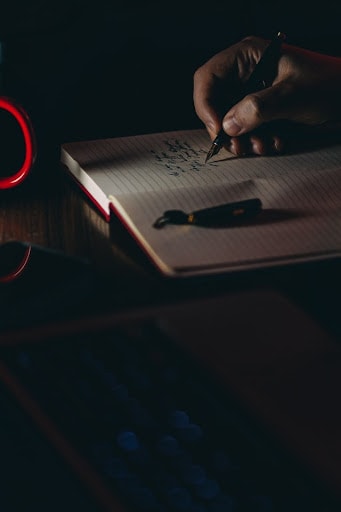
Helen Duyvestyn
Registered Nurse, Adv. Dip Nursing, Cert. Adv. Nursing, MHSc (Mental Health)
We all think and perhaps even daydream about our future – how it all might look – and try to hope for the best. Many times we can’t see a clear path from now to that gleaming future.
The Best Possible Self exercise was developed to help us visualize what we might be in the future and through increasing optimism and improving mood, help us get there.
The best possible self is a researched and studied approach to changing our mindset, improving coping skills and elevating levels of happiness.
To understand how to implement the Best Possible Self Exercise in our daily routine, we will first discuss the origin of this approach and then move on to the instructions and step-by-step guide.
Origins of the “Best Possible Self” exercise
The Best Possible Self exercise was designed on the basis of previous research which suggested that visualising your “best self” boosted and sustained a positive mood and was able to “bring greater awareness and clarity to one’s priorities”.[1]
RELATED — What is Autogenic Training and how to practice it
My experience of using this exercise for myself and my clients, is that those who take part experience over time, notice an improved mood, improved positive emotions and feel their lives are more purposeful and have more direction.
The idea is to imagine how you would like to be living in the not too distant future (i.e. 1-5 years). It’s not just about your physical life – where you are living or whether you are 5 kilograms lighter or not – it’s also about how you feel when you are living the life you want to be living in the future.
The idea is to be quite specific and really connect with how you imagine life will be – all going well.
People who practice The Best Possible Self exercise have reported improved mood and positive emotions
Research and Analysis of The Best Possible Self
Over the years there have been nearly 30 studies conducted on 2900 participants. Researchers have concluded that with consistent use of Best Possible Self exercise, people have improved their expectations, views and mindset, all contributing to better wellbeing.
Also, the exercise has shown to be more effective for older participants with shorter but more frequent practices.[2]
Furthermore, according to the Greater Good Website:
“By thinking about your best possible future self, you can learn about yourself and what you want in life. This way of thinking can help you restructure your priorities in life in order to reach your goals.
Additionally, it can help you increase your sense of control over your life by highlighting what you need to do to achieve your dreams”.[3]
What it does is that it helps you to keep in mind “where you want to be heading”. When this is in the forefront of your mind, you unconsciously or consciously make decisions which are in line with what you want in the future.
For a more conscious approach, when making decisions about your life, relationship, job or future, ask yourself – is what you are doing now the best for your future self?
How to practice The Best Possible Self
Before we move onto the instructions, it’s important to know that this is an investment in yourself. Like everything else, you will need to put time and effort into it. This means that for the first two weeks you will need approximately 15-30 minutes a day.
Don’t be afraid to let your mind and creativity loose. Have a journal close by to record your thoughts and ideas. You can then do 15 minutes once a week and re-engage this activity whenever you feel a need for a refresh, refocus and reset.
Some people have difficulty identifying with the wording “Best Possible Self”. If this is you, change the wording to suit you. People have used the wording “Best Possible Life” or even “If everything went to plan”.
Choose words that resonate best. For me, personally, “Best Possible Self” works perfectly.
The Best Possible Self Exercise
Take a moment to imagine your life in the future. What is the best possible life you can imagine?
Consider all of the relevant areas of your life such as your career, academic work, relationships, hobbies and your health. In this future, you have worked and succeeded at accomplishing your life goals. Think of this as the realisation of your life dreams and of your own best potentials.
For the next 30 minutes, simply write about what you imagine this best possible future to be. Be as creative and imaginative as you want and don’t worry about grammar or spelling.

Imagine:
- Where are you living?
- What is your job?
- Are you still in your current job?
- Who are you living with?
- What’s different about your best future from today?
The more specific you are, the more engaged you will be with the exercise and the more you’ll get out of it. If you think about a new job, imagine exactly what you would do, with whom you would work and where it would be.
It’s important, for the purpose of this exercise, to focus on the future. You may not have thought much about yourself in this way before, but as we mentioned, research suggests that doing so can have a strong positive effect on your mood and life satisfaction.
Note of warning - it may be easy to get stuck examining how your current life may not match the best possible future
You may be tempted to think about ways in which accomplishing goals has been difficult for you in the past or about financial/time/social barriers to being able to make these accomplishments happen. However, the point is to use your imagination and allow yourself to think of all that could be possible.
For the next two weeks, spend 15 minutes a day reviewing and adding to this – imagining your ideal life in the future.
How to be (even more) effective with The Best Possible Self
Get a large piece of paper and use crayons or paint (do not be worried about your artistic ability!) and draw this “new” you. Use images, words and colours. Place the imagery somewhere where you will see it every day.
Most importantly – add to it when necessary, making adjustments as your desires or vision get more specific.
Remember – great things take time, work and a lot of imagination.
If you liked the article, please leave a comment below. Most importantly, think about how you can be proactive regarding your future self. Perhaps, it’s time to include meditation to your daily routine.
RELATED — What is Meditation and How to Start
Helen is a registered nurse who holds a Masters in Health Science (Mental Health) and is a trained Life Coach. She has worked for fifteen years in acute psychiatry as a psychiatric nurse and for over two years in a holistic health clinic in Central Auckland, specialising in physical health and well-being. She has trained with ACNEM (Australasian College of Nutritional and Environmental Medicine) and is a member of AIMA (Australasian Integrative Medicine Association).
Helen is passionate about empowering others through education to reach their mental health and well-being potential. Read more about Helen and her work at www.onelifenz.com
References
(1) Sheldon, K. M., & Lyubomirsky, S. (2006). How to increase and sustain positive emotion: The effects of expressing gratitude and visualizing best possible selves. Journal of Positive Psychology, 1(2), 73-82
(2) Greater Good In Action. Best Possible Self. Accessed 23rd May 2021. https://ggia.berkeley.edu/practice/best_possible_self
(3) Best Possible Self (Greater Good in Action). (2021). Berkeley.edu. https://ggia.berkeley.edu/practice/best_possible_self






